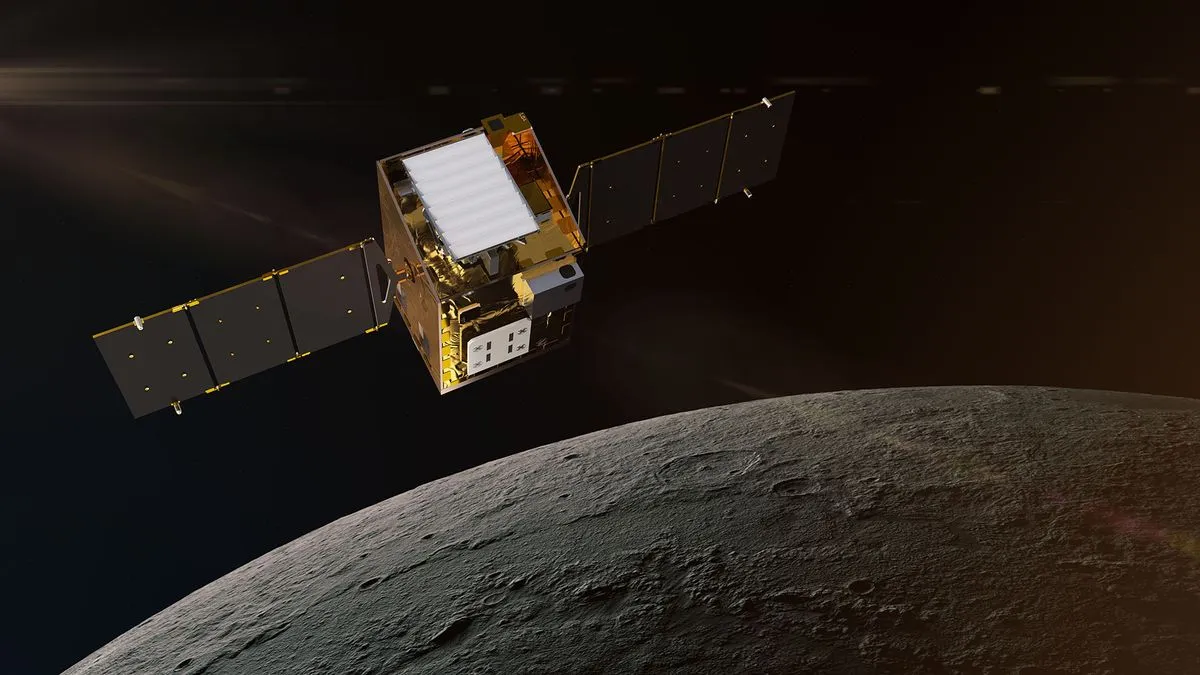
NASA's Lunar Trailblazer probe, which successfully launched on February 26 atop a SpaceX Falcon 9 rocket, is currently facing significant challenges in its mission. The spacecraft launched alongside Intuitive Machine's Athena moon lander as part of the IM-2 mission. Designed to orbit low over the lunar surface, the Lunar Trailblazer aims to hunt for and map potential sources of water in permanently shadowed regions on the moon.
The launch of the Lunar Trailblazer went off without a hitch, and the probe powered up successfully, beginning to transmit data shortly after reaching orbit. However, within approximately 12 hours post-launch, mission operators detected power issues leading to a temporary loss of communication with the spacecraft. This situation raised concerns among the team at NASA, particularly at Caltech and the Jet Propulsion Laboratory.
Following the initial communication blackout, mission operators were able to reestablish contact with the Lunar Trailblazer hours later. However, they are still working diligently with NASA ground stations to regain full telemetry and commanding capabilities. This is essential for assessing the power system issues and developing effective solutions to ensure the success of the mission.
The Lunar Trailblazer, built by Lockheed Martin, is equipped with two sophisticated instruments designed to aid in the search for lunar water. The first, the Lunar Thermal Mapper (LTM), utilizes infrared light to map the surface temperature of the moon. This information is crucial for understanding mineral distribution on the lunar surface. The second instrument, the High-resolution Volatiles and Minerals Moon Mapper (HVM3), developed by NASA's Jet Propulsion Laboratory, measures sunlight reflection off the lunar surface, helping to identify the chemical signatures of water that may be present.
Finding water on the moon is a top priority for NASA as the agency aims to establish a sustainable human presence through its Artemis program. Recent lunar mapping missions have provided evidence of water existing in permanently shadowed craters, particularly near the lunar south pole. This region is also the target for NASA's upcoming Artemis 3 mission, which plans to land astronauts on the moon. While the amount of water available in these areas remains uncertain, scientists are hopeful that it could support human activities or even be utilized to produce resources like rocket fuel.
In addition to the challenges faced by the Lunar Trailblazer, another probe that launched alongside it, the Odin probe from Astroforge, is also experiencing difficulties. Astroforge is a private company with aspirations of mining asteroids for valuable resources, and the Odin probe was intended to study asteroid 2022 OB5 in preparation for a follow-up mission to land on it.
The current situation with both the Lunar Trailblazer and the Odin probe highlights the complexities and risks associated with space exploration. As NASA and its partners continue to work on these challenges, the future of lunar exploration remains a critical focus for advancing our understanding of the moon and its resources.